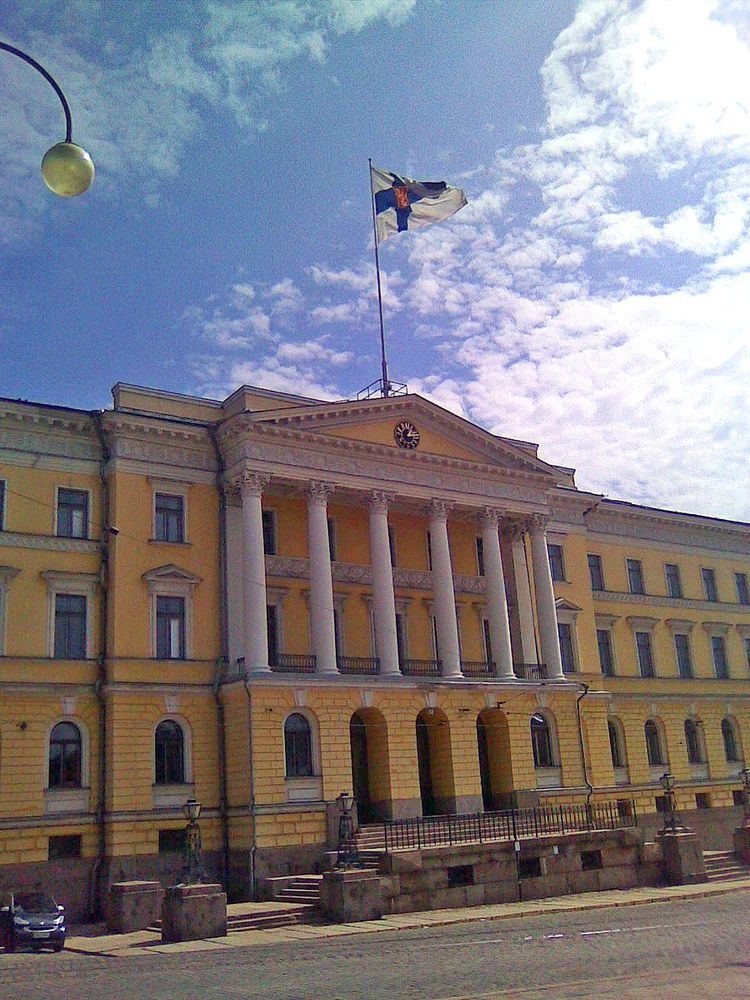 | ||
The Cabinet of Finland (also called the Council of State, Finnish: valtioneuvosto, Swedish: statsrådet; officially rendered Finnish Government) is the body that directs the Government of Finland. However, in governmental translations to English, the distinction is often blurred between cabinet and government in the wider sense. This wider sense includes the Parliament of Finland (on which the cabinet is dependent), the governmental agencies that are directed by the Cabinet, and the independent judicial branch of government. Despite of the occasional blurring by translators, the difference is significant. The Cabinet is directly responsible to the parliament and may be dismissed by a motion of no confidence. The President, according to the 2000 constitution, formally appoints the cabinet, but the daily working is the responsibility of the Prime Minister.
Contents
In 1918, after Finland's independence, the Cabinet, that in the Grand Duchy of Finland had been called the Senate of Finland, was reorganized and renamed to the Council of State. One of the main objectives of that reform was to separate the judiciary from the executive branch.
According to the recent revision of the Constitution of Finland (as of 2000), the power over foreign affairs is retained by the president, as it also is in France, although with a narrow definition of foreign affairs that excludes influence over preparations of decisions within the European Union. International treaties and declaration of war are within the authority of the parliament.
Matters within the authority of the Cabinet are decided at plenary meetings, with a quorum of five ministers present, in the case of matters of wide importance and matters that are significant for reasons of principle. Less important matters are decided within the respective ministries.
Matters within the authority of the President are decided at plenary meetings of the Cabinet, with the exception of appointments, pardon, and calling of extraordinary elections.
Formation
After election, the party in plurality has the privilege to appoint a negotiator to form the government. In practice, this person is the leader of the party and becomes the Prime Minister. Since 1972, all cabinets have been formed as coalitions of multiple parties that together constitute a parliamentary majority. In an intense period after elections, the negotiator will attempt to forge a consensus between the participating parties on the issues to be prosecuted during the tenure of the government. This will then be written down in a government platform.
Following from President Urho Kekkonen's excessive direction over the government formation process, the 2000 constitution limited the President's power in government formation. Today, the President only formally appoints the government, but cannot select or remove individual members.
Current Council of State
The current Council of State, the 72nd since Finland's independence, was inaugurated by President Sauli Niinistö on 29 May 2015.
The current Council of State is a Center-right, 14-minister coalition consisting of the Centre Party (Suomen Keskusta), the Finns Party (Perussuomalaiset), and the National Coalition Party (Kansallinen Kokoomus).
The Chancellor of Justice is not a member of the Council of State but must by law attend its every meeting.
